SSD
Latest
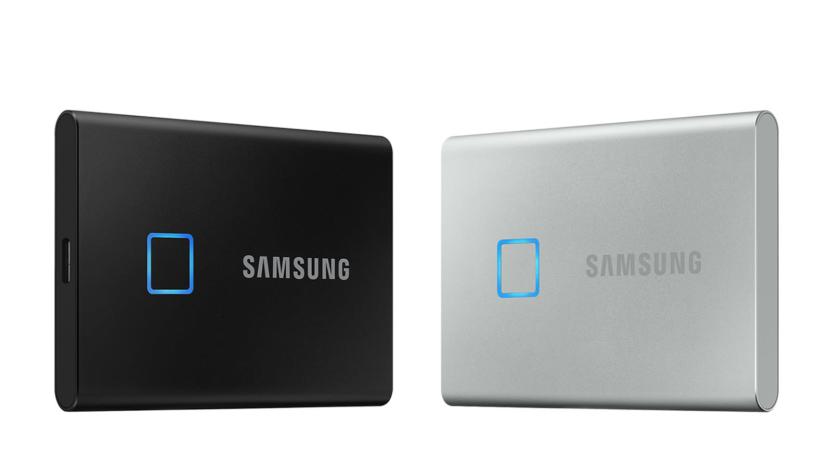
Samsung’s T7 Touch SSD can be locked with a fingerprint
Security is especially important for portable SSDs, which might carry tons of sensitive information yet end up tossed in a bag. Samsung recognizes this. To make its latest portable SSD more secure, it has added a fingerprint sensor to the new T7 Touch, which was named a CES 2020 Innovation Awards honoree.

SanDisk unveils a portable 8TB SSD prototype and 1TB USB-C thumb drive
If you're in the market for a portable SSD, you're probably looking at drives that are at most 2TB in capacity -- 4TB SSDs exist, but they're few and far between. SanDisk is plowing ahead, though, and is showing off an 8TB SSD prototype at CES. The company says it's the world's highest capacity, pocket-sized SSD with a transfer rate of 20Gbps. The drive looks a bit bigger than the company's current Extreme Portable External SSD models, but that's to be expected, since it has a much higher capacity and transfers data roughly four times faster.
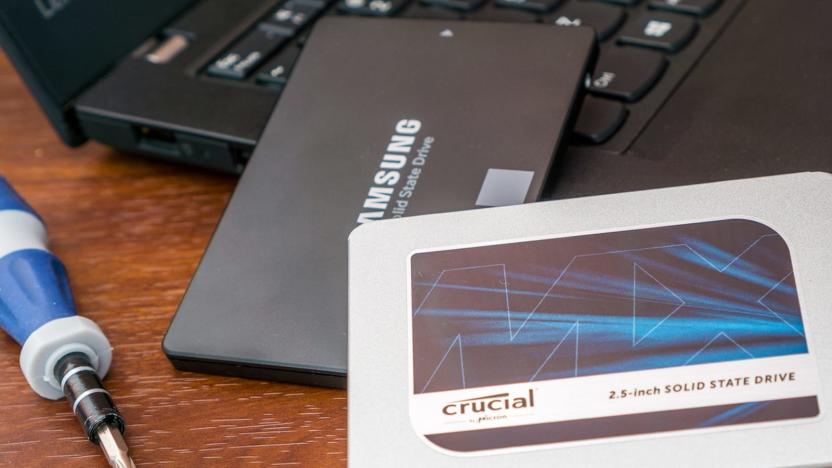
The best SSDs
By Andrew Cunningham This post was done in partnership with Wirecutter. When readers choose to buy Wirecutter's independently chosen editorial picks, Wirecutter and Engadget may earn affiliate commission. Read the full guide to SSDs. Whether you're replacing an existing solid-state drive or upgrading from a traditional hard drive to get better performance, almost every SSD you can buy today is great. But some are still better than others. If you need to buy a SATA SSD right now, we think the 500 GB Crucial MX500 is the best option for most people. The MX500 isn't the fastest SATA SSD you can get, but it comes close, and it has the best combination of price, performance, endurance, and capacity of any drive you can buy. The Crucial MX500 is just a little slower than Samsung's more expensive SATA SSDs in most benchmarks, but most people wouldn't notice the difference. It's as good as or better than the rest of the competition and it performs better when full or near-full than its predecessor, the MX300. It supports full-disk encryption and it comes in both 2.5-inch and M.2 SATA versions, but not the (older, less common) mSATA. Crucial offers a five-year warranty on the drive for more peace of mind (three years is typical), The Samsung 860 Evo replaces the 850 Evo, which was our top SSD pick for nearly three years. Compared with both its predecessor and the Crucial MX500, the 860 Evo is a little faster and offers much better durability. And in addition to the 2.5-inch and M.2 versions, it's available as an mSATA drive, unlike the MX500 and most other modern SSDs. But it's usually more expensive than the MX500, and you won't notice the difference between the two in day-to-day use. The MX500 is the drive to get as long as it's cheaper. Any good SATA SSD will help your PC boot quickly, speed up app launches and load times for games, and generally make your computer more responsive; most people, including gamers, don't need anything faster. But serious video and photo editors, server admins, CAD designers, software developers, and other people with workstation-style demands—anyone who frequently loads and saves large files—may benefit from a faster drive. If that describes you, choose the PCIe Samsung 970 Evo Plus, which can be four or five times faster than the fastest SATA drives. It's more expensive—typically $50 or $60 more than a good SATA drive for 500 GB and around $120 more for 1 TB—and you'll need a desktop or an M.2 PCIe–equipped laptop to use it. Just remember that the difference between a SATA SSD and a PCIe SSD isn't as noticeable as the difference between a SATA SSD and a spinning hard drive. Western Digital's WD Blue SN500 is a budget M.2 PCI Express SSD that's faster than (and around the same price as) the SATA-based MX500 or 860 Evo. It's the best option if you're building a new desktop computer, configuring a barebones mini PC, or upgrading a one- or two-year-old laptop that you bought with a smaller SSD and you want a fast drive for a lot less money than the 970 Evo. But most people will be just fine with a SATA drive (and you also shouldn't upgrade to the SN500 from a SATA SSD of an equal or greater capacity). The SN500 performs well for the price and comes with a solid five-year warranty from a reliable company. But it comes in only 250 and 500 GB capacities, it doesn't support hardware encryption acceleration, and like all M.2 PCIe drives it will work in only newer PCs.
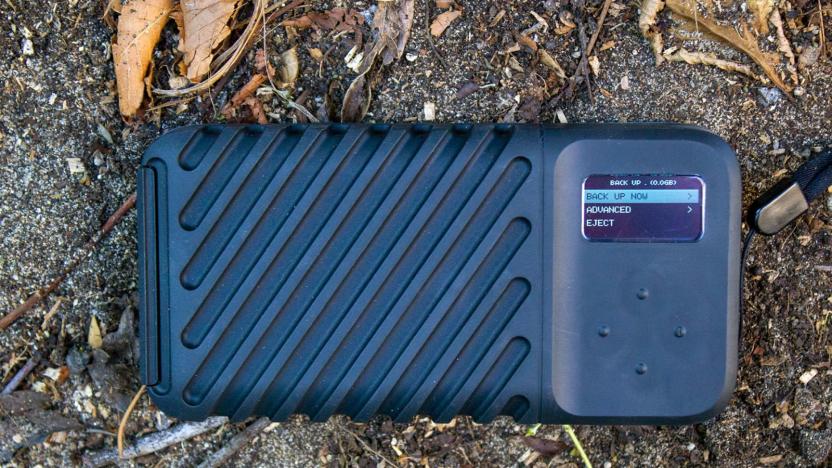
Gnarbox 2.0: Portable media management for the outdoor crowd
The original Gnarbox was intriguing. On the one hand, it was a rugged portable drive. On the other, it was a mini PC without a display. Via the companion app, you could connect to the device wirelessly and edit 4K video and high-resolution photos. Today, Gnarbox 2.0 is ready for prime time, and it's a very different proposition.

Seagate's latest portable SSDs are wrapped in fabric and camo
How do you spice up an external drive when it's difficult to stand out based on specs alone? Make them look right at home clipped to your backpack. Seagate has introduced a line of One Touch SSDs covered in either fabric (if you prefer plain black or white) or Special Edition camo patterns. It's a simple trick, but it might do the job if you're tired of sterile-looking drives that scream "technology." They're very pocketable as well, at just under 3 inches long.
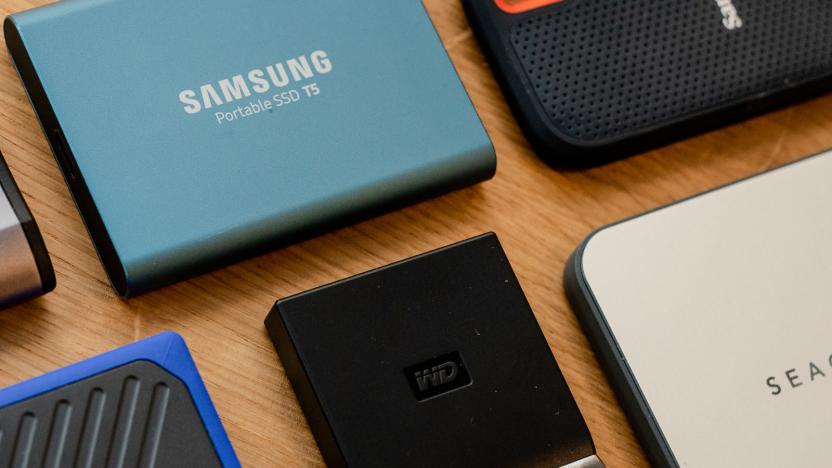
The best portable SSD
By Justin Krajeski This post was done in partnership with Wirecutter. When readers choose to buy Wirecutter's independently chosen editorial picks, Wirecutter and Engadget may earn affiliate commission. Read the full guide to portable SSDs. If you frequently move large files between computers and want a fast, small device to do it with, you should get a portable SSD. After researching 17 portable SSDs and testing the five most promising in 2019, we found that the 500 GB Samsung T5 was the best. It's fast, compact, competitively priced, and reliable, and the one we tested has worked well for the past two years. The 500 GB Samsung T5 Portable SSD is about as expensive per gigabyte as other external SSDs. It's also very light and compact, so you can easily throw it in your bag (or even tuck it inside your pocket) when you're on the go. The T5 has one USB 3.1 Gen 2 Type-C port that supports USB transfer speeds of up to 10 Gbps, and unlike other portable SSDs we tested, it includes cables to connect to both new and old devices, as well as useful AES 256-bit hardware encryption to protect your sensitive data. The T5 had software that was pleasant to navigate, with a clean layout; other portable SSDs we tested didn't include software, or their software was bloated and less intuitive. With the T5, it's a breeze to set up encryption or check for updates. Plus it has an indicator that lights up when it's connected and blinks while it's actively transferring (a minor perk, but one that makes life easier), and it comes with a three-year warranty. If you want more storage and you're willing to pay for it, we recommend the 1 TB Samsung T5 Portable SSD. Since higher-capacity solid-state drives often provide slightly improved performance, we expect the 1 TB version to be a little faster than the 500 GB model, although we weren't able to test it. It's otherwise identical to the 500 GB model in size and features, and it costs about the same per gigabyte as the 500 GB version. If the Samsung T5 is sold out or unavailable, or if the T5 is significantly more expensive, we recommend the 512 GB Western Digital My Passport SSD. Like the T5, the My Passport SSD supports USB 3.1 Gen 2 transfer speeds, and in our testing it was about 10 MB/s slower than the Samsung T5, a borderline imperceptible difference. The My Passport SSD is longer, thinner, and a bit lighter than the Samsung, but they're both pretty darn compact—and they're smaller than everything else we tested that performed comparably. It has one USB-C port and comes with a USB-C–to–USB-C cable, as well as a tiny USB-C–to–USB-A adapter, which seems easy to lose compared with the USB-C–to–USB-A cable that comes with the Samsung T5. Like the Samsung—and unlike its competition—the My Passport SSD has AES 256-bit hardware encryption to reliably protect your sensitive information. And it comes with a solid, three-year warranty. But some Amazon reviewers found its software annoying, and it lacks the Samsung's helpful activity indicator light.
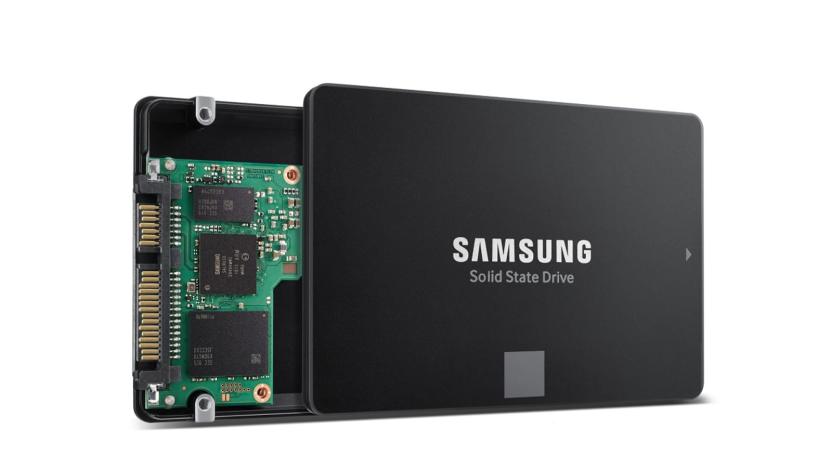
Samsung crams 100 layers and more speed into its latest SSD
Samsung has started mass production on solid state drives (SSDs) that feature the company's sixth-generation 256GB three-bit vertical NAND memory. This means the drives come with an industry first 100 layers of NAND cells, a writing speed of 450 microseconds and a reading response time of 45 microseconds. Compared to Samsung's previous 90-layer SSDs, performance is up 10 percent and power consumption down 15 percent, according to the company.
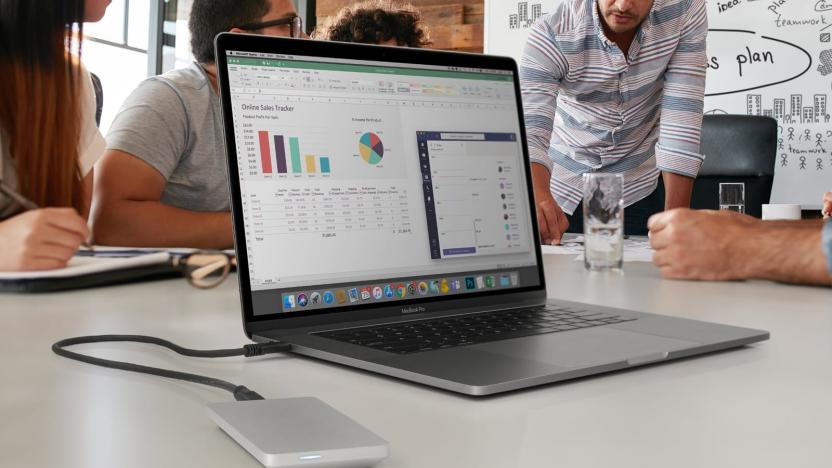
OWC claims its USB-C SSD is the fastest yet
OWC might have your back if you want the speediest external drive you can get without sacrificing too much in the way of portability or price. The company claims that its new Envoy Pro EX is the fastest USB-C SSD on the planet, with its NVMe-based storage offering transfer speeds as high as 980MB/s -- for context, even SanDisk's Extreme 900 Portable SSD peaks at 850MB/s in ideal conditions. It's a drive that could handle 4K video editing one moment and sit in your pocket the next.

Gigabyte's next-gen SSD shows the incredible potential of PCIe 4.0
When AMD launched its third-gen Zen 2-based Ryzen processors, it also introduced the next generation PCIe 4.0 controllers. Now, Gigabyte has launched one of the first PCIe 4.0 NVMe SSDs that shows the incredible speed potential of the new tech. The AORUS NVMe Gen4 SSD can hit up to 5,000MB/s read speeds and 4,400 MB/s write performance. That's about 56 percent faster read and over double the write speeds of Samsung's 970 EVO, currently one of the fastest NVMe SSDs on the market.

Apple dropped the price on several expensive Mac upgrades
Apple's iMac updates weren't the only changes the company made today. With less fanfare, it also lowered the cost of SSD upgrades for the MacBook Air, MacBook Pro and Mac mini. It lowered the cost to upgrade the 2013 Mac Pro RAM, too. These changes were first spotted by MacRumors. While they make the priciest SSD upgrades less expensive, the more reasonable upgrades -- the ones most people might actually buy -- haven't changed.

WD brings cheap high-speed NVMe SSD performance to creators
The drop in SSD NVMe prices means the miniature storage sticks are becoming increasingly accessible. Even the super-fast Samsung 960 EVO 500GB model, with speeds of 3,200 MB/s, recently dipped below $150 to make room for its successor. Sizing up the market, Western Digital is aiming its upcoming WD Blue SN500 NVMe SSDs at those on a budget. The new 500GB stick packs around half the read and write speeds of Samsung's 960 Evo (1,700MB/s and 1,450MB/s respectively) but, at $78, costs roughly half the price.
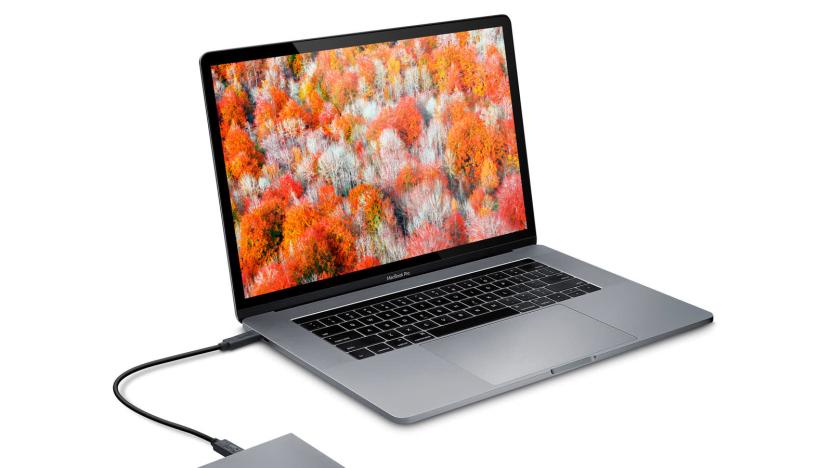
LaCie's chiseled 5TB USB drive aims to make storage stylish
LaCie (and its parent Seagate) is still determined to inject some style into the world of external hard drives -- thankfully, with some improved functionality as well. Its 2019 Mobile Drive touts a chiseled-looking "diamond cut" metal design that wouldn't look out of place next to a MacBook Pro (you can still use it with Windows PCs, of course). The real allure, though, is the raw capacity -- you can opt for a 5TB version if you're editing gobs of media on the road, and even the slim version packs 2TB.

Samsung's 860 QVO brings multi-terabyte SSDs down to Earth
To date, buying a multi-terabyte solid-state drive has usually meant paying through the nose. It hasn't been uncommon to spend $1,000 or more to get a drive with capacity matching hard disks costing far less. That gap hasn't completely closed yet, but it's getting much narrower -- Samsung has unveiled its promised multi-terabyte SSD for the masses, the 860 QVO. The 2.5-inch SATA lineup uses quad-level cell (aka 4-bit) V-NAND memory to offer high capacities at prices that you wouldn't expect, at least not from a brand as big as Samsung.

Apple announces repair programs for iPhone X, MacBook Pro problems
As it tends to do, Apple has chosen a Friday evening to announce programs that will replace flawed components on a couple of its devices. First up is a display module replacement program for the iPhone X. Some owners have been reporting touch issues since the phone debuted, and according to Apple a failed part in the display could cause the following problems: The display, or part of the display, does not respond or responds intermittently to touch The display reacts even though it was not touched If your touchscreen is finicky on an "eligible device" then it will be replaced for free, although there might be a charge for things like a cracked display. The replacement program covers your iPhone X for three years dating back to when it was originally purchased.

Intel's first 'ruler' SSD holds 32TB
Intel has unsheathed its first "ruler" SSD, a bizarre device with a 12-inch long housing and colossal amount of storage. Intel created the new form factor last year to cram as much storage as possible into a "1U" server form factor, with optimal thermal efficiency. The DC P4500 is the first drive with that design and fits 32TB into one twentieth the space that regular hard disks would take up, while consuming a tenth the power.

Samsung is building a high-speed 4TB SSD for everyone
When Samsung unveiled its first-ever 1-terabit flash chip, it promised that massive SSD storage devices would soon follow. As promised, it's now producing 4TB SSDs, and best of all, these drives are not for cloud companies or enterprises. "Samsung's new 4-bit SATA SSD will herald a massive move to terabyte-SSDs for consumers," said executive VP of memory sales Jaesoo Han.
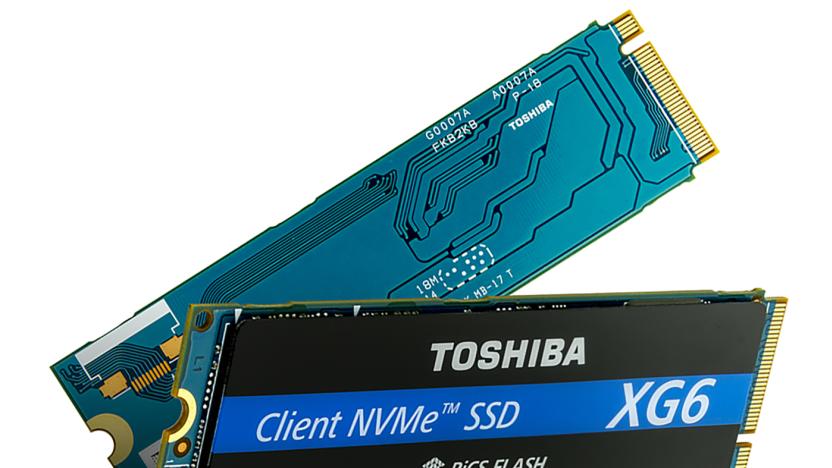
Toshiba's SSDs are the first to use 96-layer 3D flash chips
Toshiba has unveiled the XG6 series, the first SSDs to be built with its cutting-edge 96-layer 3D flash tech. The XG6 series of NVM Express (NVMe) SSDs use BiCS 3D flash memory with 3-bits-per-cell that power the drives to 3,180 MB/s read and 3,000 MB/s write speeds, with a stellar 365,000 random write IOPS (input/output operations per second). At the same time, the devices consume a maximum of just 4.7 watts.
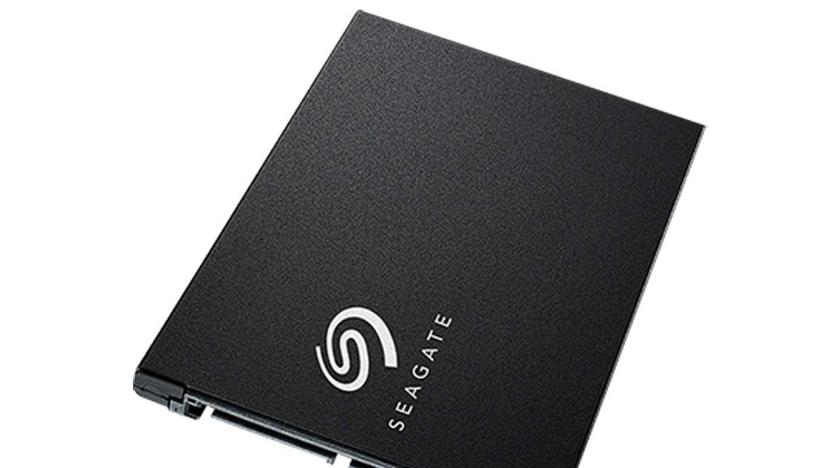
Seagate courts PC enthusiasts with Barracuda SSD (update: pricing)
Seagate has offered SSDs for a while, but it's not what you'd call a strong supporter. Unless you're an enterprise user, you're typically either buying a hybrid drive or looking to one of the many alternatives. The company is determined to change its reputation, though: it just launched a Barracuda SSD built for PC enthusiasts. It's a relatively familiar-looking 2.5-inch SATA drive with sequential speeds up to 560MB/s and capacities ranging from 250GB to 2TB, so it won't compete with the NVMe drives that are all the rage as of late. However, the BarraCuda should be more than enough for a speedy boot drive.
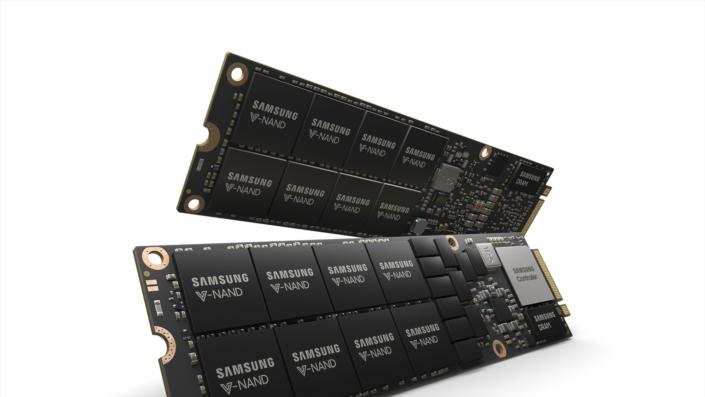
Samsung now has an 8TB SSD thanks to 3D memory tech
Data centers are about to get a lot more storage efficient. Samsung has launched the industry's highest capacity NVMe solid state drive (SSD) that packs an 8TB punch in an ultra-small footprint of just 11cm x 3.05cm -- twice the capacity of SSDs commonly used in hyper-scale server designs and slim line laptops.
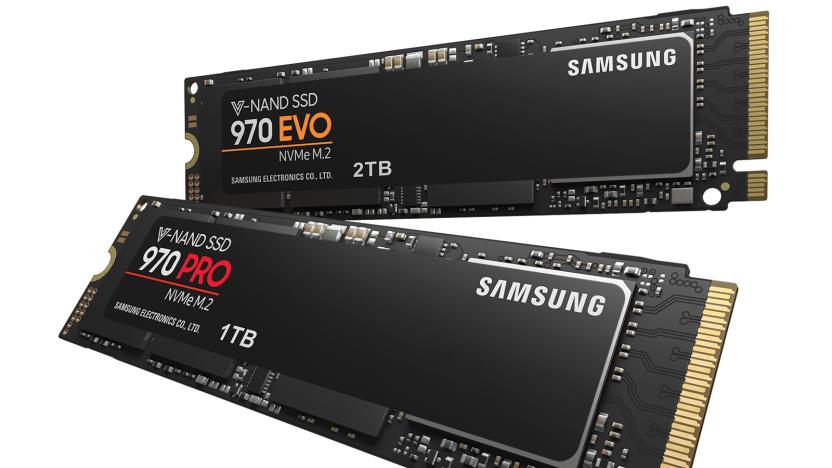
Samsung's 970 series SSDs provide the write speeds you crave
Few would call Samsung's 960-series SSDs slow (or indeed, most any NVMe SSD), but that isn't stopping the company from refining the formula. The newly launched 970 Evo and 970 Pro drives take advantage of Samsung's developments in its 64-layer 3D flash memory and Phoenix controller (both of which have surfaced in earlier drives) to deliver performance that makes the 960s seem relatively pokey. Both the Evo and Pro can hit the peak 3,500MB/s sequential read speeds of the 960 line, but the real star is the write speed. The 970 Evo by itself is faster than the 960 Pro with up to a 2,500MB/s sequential write rate, while the 970 Pro is quicker still at 2,700MB/s.







